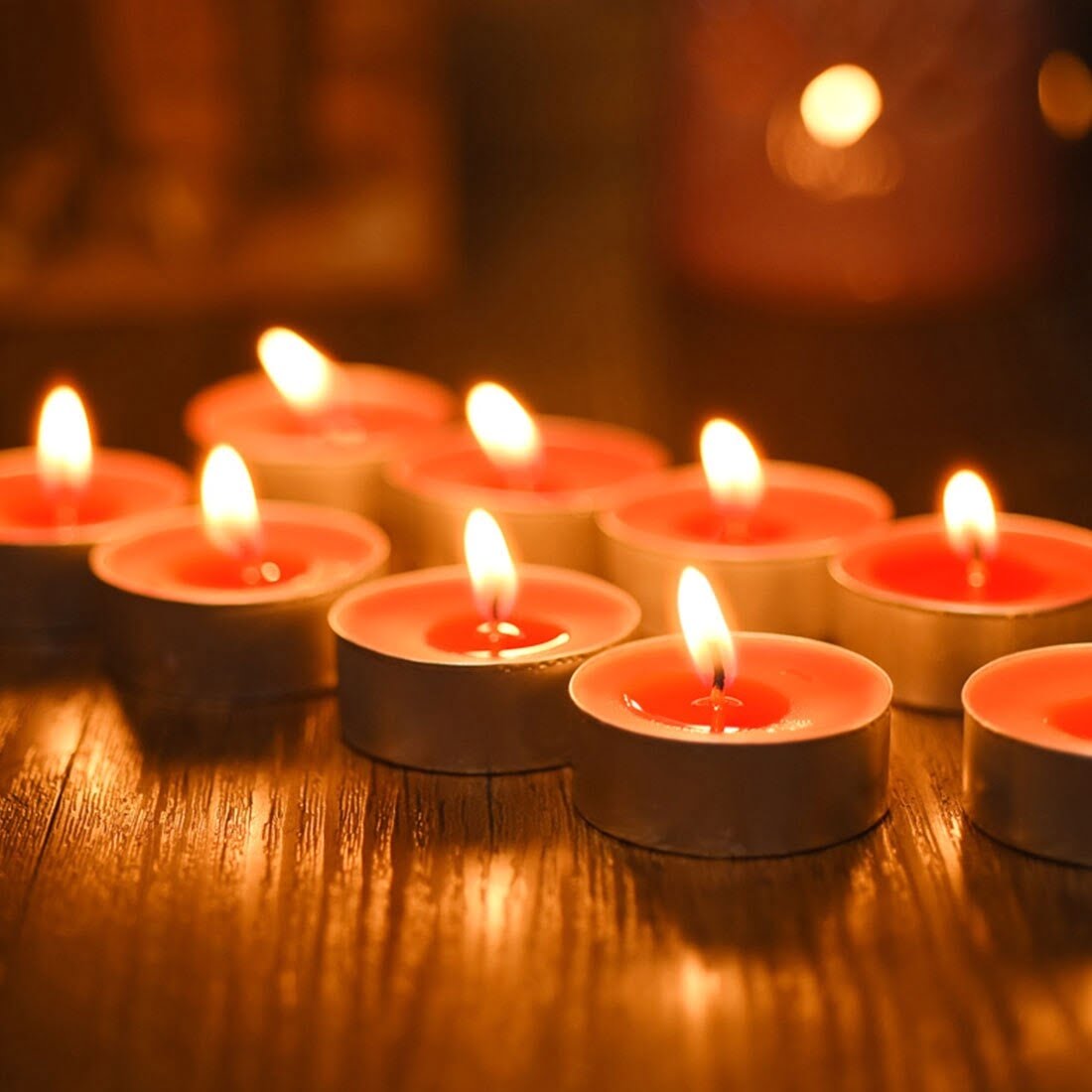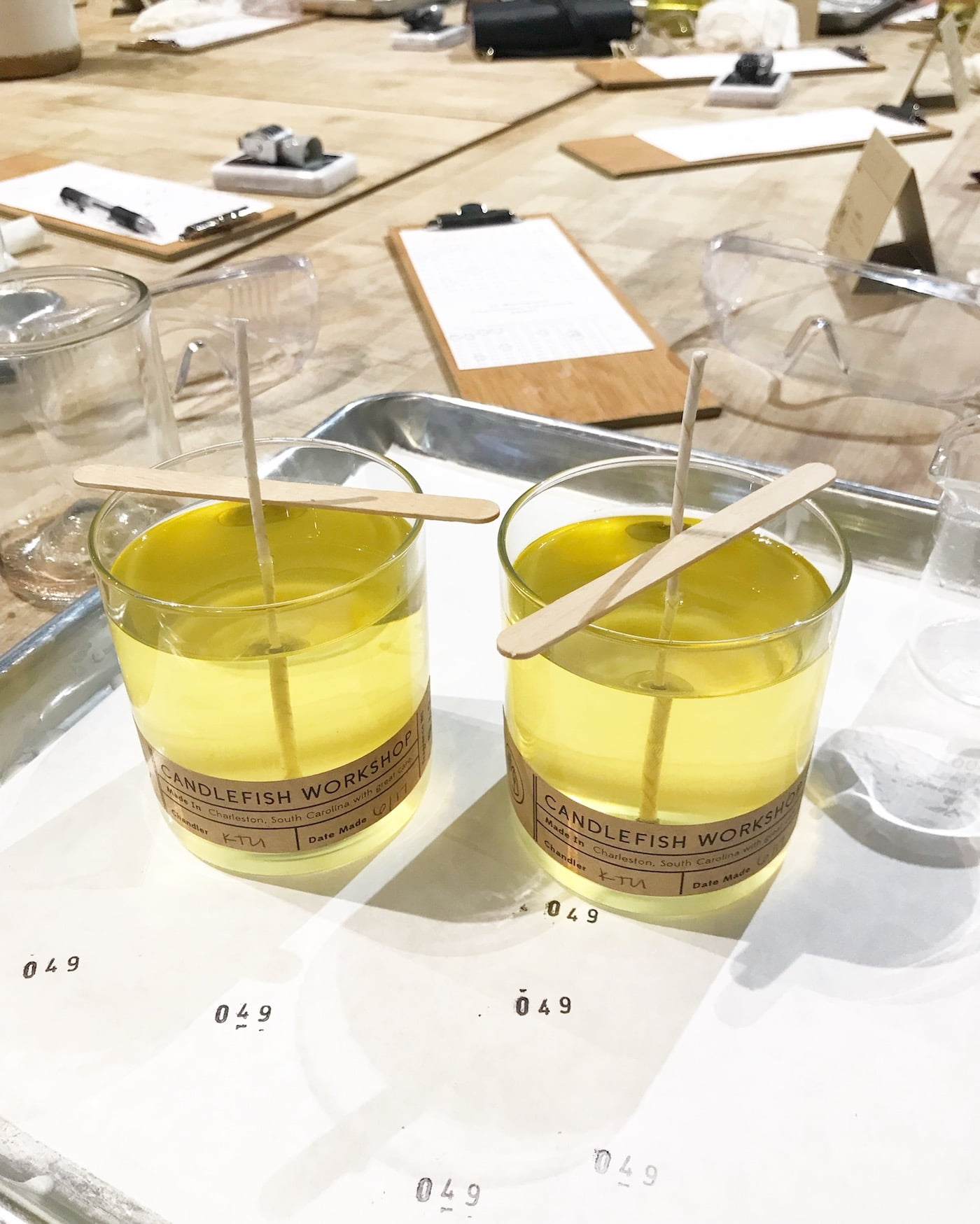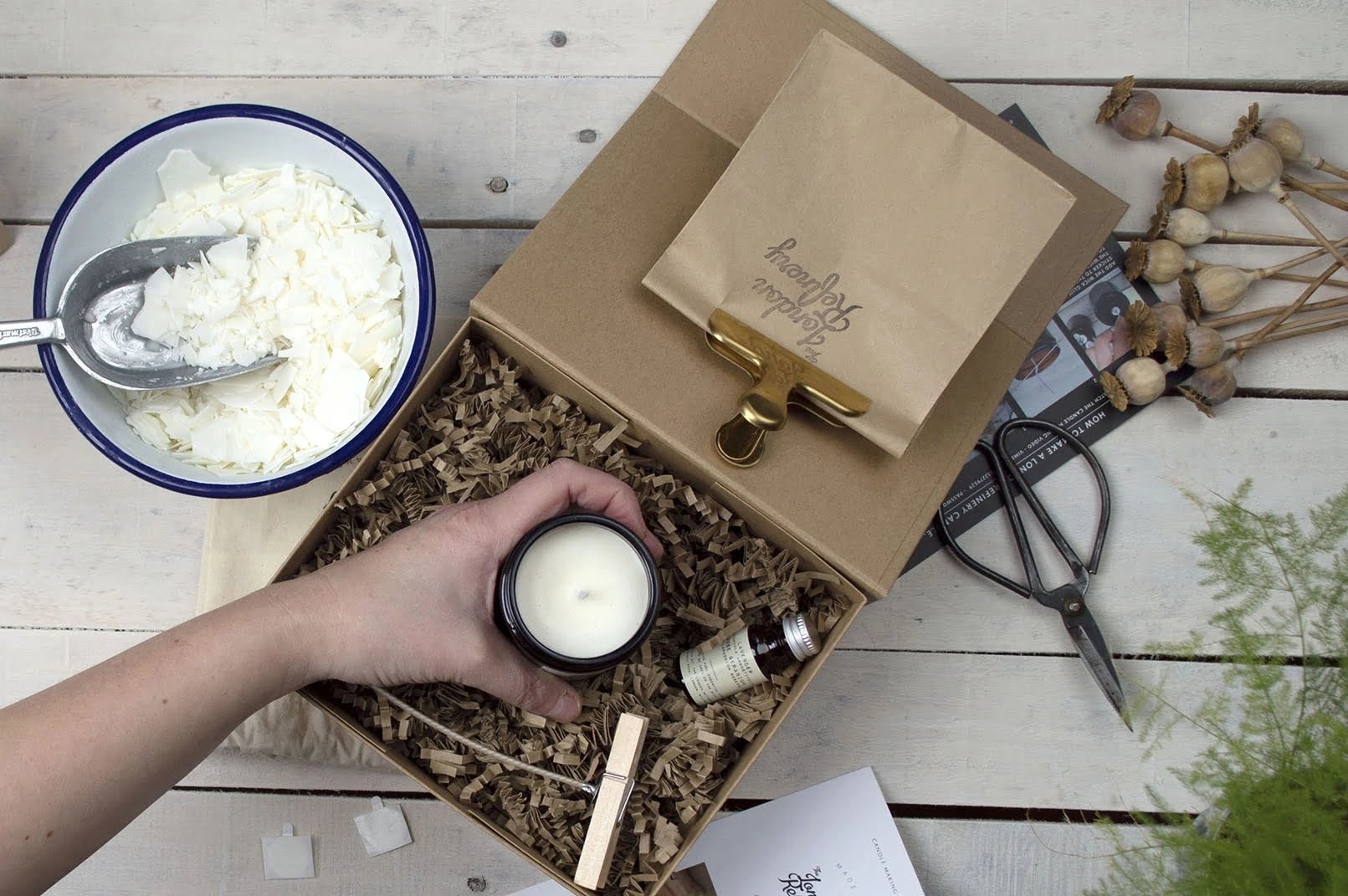Introduction
Candle making is an art form that has been enjoyed for centuries, from handmade soy candles to the traditional beeswax candles. Candles offer a unique way to bring light and scent into any room or outdoor space. However, many people are unaware of the environmental impacts of using dyes in their candle-making process. Most dye materials used in candle making contain chemicals that can be potentially damaging to the environment if not disposed of properly.
When using environmentally friendly dyes, such as natural vegetable oils and minerals, you are reducing the number of harmful chemicals released into the environment. Eco-friendly dyes not only provide a safe alternative to synthetic materials but also help create beautiful vibrant colors that bring uniqueness to each candle. Additionally, these dyes contain no added toxins or hazardous components and are non-toxic when burning ” meaning no harmful fumes or smoke are released when burned.
Using eco-friendly dyes for your candle-making project can help protect nature while keeping your costs low since most natural dye materials cost less than synthetic dyes. Furthermore, they provide a wide range of shades that can be mixed and matched together to create a one-of-a-kind piece with plenty of visual interest ” all while being mindful of nature’s balance! Knowing that you are doing something positive for our planet will bring a sense of satisfaction when it comes time to enjoy your special creation!
What are Eco-Friendly Dyes for Candle Making?
Eco-friendly dyes for candle making are substances that are non-toxic and safe to use around humans, animals, and the environment. For example, natural dyes such as vegetable or mineral-based pigments provide deep and rich colors for candles. These types of dyes are also widely available, very affordable, and do not contain any potentially harmful additives or toxic compounds that could harm the environment. In addition to vegetable or mineral based dyes, beeswax is also a great alternative when it comes to providing a unique hue. When combined with essential oils like lavender or sandalwood, beeswax can impart some beautiful natural tones that range from whites to golden yellows and even reds depending on the blend used. Finally, many modern candle makers have access to non-toxic synthetic dyes which provide deeper brighter colors than most eco-friendly alternatives as well as being virtually non-toxic.
Comparison of Eco-Friendly Dyes and Synthetic Dyes
Eco-friendly dyes are becoming increasingly popular for those looking to use more eco-friendly options in their candle making. These dyes are plant-based and typically made from natural colors, like mineral salts, food grade colors, and vegetable dyes. Eco-friendly dyes are biodegradable, nontoxic, and dye in an environmentally responsible manner. They typically require less energy to produce than synthetic dyes.
Synthetic dyes are often cheaper than eco-friendly alternatives due to the fact that they can be mass produced in labs or factories with a variety of artificial chemicals. While Synthetic dyes contain ingredients that tend to result in brighter colors than natural ones, these chemicals may not biodegrade as easily or provide the same ecological benefits as eco-friendly ones. Furthermore, some of these artificial chemicals may contain hazardous materials that could affect the environment if improperly disposed of or used in candles made for burning.
When comparing eco-friendly and synthetic dyes for candle making it’s important to consider the overall environmental impact that each type poses. Eco-friendly options are ideal for those looking to reduce the amount of toxins released into the air while creating their products while maintaining vibrant colors and durable results over time. Synthetic dyes offer cost efficiency but must be properly handled at all times to ensure no hazardous components leak out into the environment before they can burn up safely.
Overview of Different Eco-Friendly Dye Types and Benefits
Candle making is an enjoyable and engaging hobby that offers lots of creative possibilities. However, for those who are looking for a more sustainable approach, it is important to ensure that the dyes used in their projects are environmentally safe. There are various types of eco-friendly dyes on the market, from natural options such as plant-based pigments to synthetic alternatives like mineral-derived colors. Each type has its own unique benefits and drawbacks when used in candle making.
Natural dye sources that can be used in candle making include food items like spices and fruits, plants like herbs and flowers, minerals like clays and salts, and even materials found around the home such as coffee grounds or vegetable oil. For example, turmeric root can be soaked overnight to release bright yellow color pigments which can then be used to dye candle wax. Not only are these dyes completely natural, they are also often affordable compared to some of the artificial alternatives available. Natural dyes can also bring other benefits to your candles; they add unique textures and scents that synthetic alternatives cannot provide.
In contrast, there are also synthetic dyes available on the market specifically designed for candle-making use that offer greater levels of vibrancy than you might be able to achieve with natural sources alone. Unlike natural dyes which must be mixed together before use, these synthetic colors usually come ready made and in small amounts – a great benefit if you work small batches or if you need exact measurements for specific colors throughout a larger project. Furthermore, colors made from synthetic dye remain vibrant for longer than many naturally derived shades – an incredibly important factor when designing candles because eventually the wax will cover over any pigment added so preservation of intensity is vital here!
Making Eco-Friendly Dyes for Candle Making at Home
Creating environmentally safe dyes for candle making is becoming increasingly important as the public becomes more aware of the negative impacts that many synthetic dyes have on the environment. There are several ways you can make your own environmentally friendly dye combinations to restore color to your candles without using harsh chemicals or synthetic materials. Natural materials such as flower petals, turmeric, tea leaves, paprika, onion skins and even berries can all be used to produce a wide range of colors. This can also be a great opportunity to get creative since each material will create a different hue and color depending how it’s mixed and applied.
Certain herbal extracts such as chamomile, lavender and calendula are also widely used for creating unique effects in wax which won’t fade easily over time. You may also consider employing the help of dried flowers which when crushed into small particles provide an excellent base for your coloring needs. Additionally, spices like erioglaucine and floral pigments from pastel roses can serve as brightly colored elements although not as commonly found in traditional candle making methods. Others include spirulina powder for green hues and cinnamon for browns and reds. Once you have collected all the necessary ingredients it would be a good idea to do some research and read up on any recipes to get started so you know exactly what combination of ingredients yield what particular colors and results you may be looking for while keeping environmental sustainability in mind during preparation. Finally assume safety precautions such as using gloves, aprons or masks to ensure that no contaminants enter the mixture before melting and setting aside these natural dyes into blocks or liquid form onto freshly poured wax candles.
How to Choose the Right Eco-Friendly Dye for Your Candle Making Needs
When it comes to making candles, not all dye is created equal. It’s important to be aware of what ingredients are included in the dyes you use and how eco-friendly they really are. Sourcing environmentally-safe dyes for your candle making needs can help reduce environmental hazards and protect your health. Here are some tips on how to choose the right eco-friendly dye for your candle needs:
1. Look For Natural Ingredients: Many commercially made coloring agents contain chemicals, preservatives, and other potentially harmful ingredients. To ensure that you’re using an eco-friendly option, look for natural dyes derived from plants or minerals. Natural dyes are safe for the environment, free of harsh additives and often organic too!
2. Consider Soap Dye Blocks: If you want something a little brighter and more vibrant than plant based dye blocks, consider SOAP dye blocks. They’re a great choice for creating unique colors with rich pigments but without any additional synthetic materials or preservatives that have a negative impact on the environment.
3. Read Labels: Don’t forget to read labels when buying any kind of dyes! Check out the list of ingredients and make sure there aren’t any hidden toxins or hazardous substances included in the product before you purchase it. You should also look out for symbols designating it as non toxic or biodegradable too!
4. Avoid Non-Biodegradable Dyes: When it comes to environmentally safe dyes, avoid those made with pigments that don’t biodegrade over time such as zinc oxide or titanium dioxide. These pollutants can enter into waterways and soil causing significant damage to ecosystems if not properly disposed off after use .
5 . Think about Liquid Colors vs Pigment Colors : Both liquid colors and pigment colors are common types of candle dye , but liquid colors can sometimes be more harmful because they’re applied in larger quantities . Pigment colors , on the other hand , require less application which means lower risks when it comes to environmental pollution .
Step-by-Step Guide to Using Environmentally Safe Candles
1. Start by sourcing sustainable materials for candle making. Tin-free, organic and locally sourced materials are the most suitable for environmentally friendly candles, as they don’t contain hazardous chemicals.
2. Choose ecologically safe dyes and pigments when deciding which colours to work with. Avoid chemical dyes containing metals and opt instead for natural colourants from vegetable extracts or minerals, such as iron oxide, or plant material and herbs like turmeric or chamomile for a natural hue.
3. If using essential oils, check to make sure they’re certified organic whenever possible to reduce the use of synthetic chemicals in your candles. Essential oils can be added at any step in the candle making process; just remember to research safety information prior to use!
4. Ensure your candle wax is safe by sourcing beeswax or soy-based waxes that have low melting points and burn slowly over a sustained period of time”measured in hours”providing a longer lasting cartdle than paraffin based ones do.
5. Look into non-hazardous thickening agents such as stearic acid and liquid paraffin, as these ingredients can be highly combustible if handled incorrectly; you may also want to consider vegetable monoglycerides which are grown from renewable sources like coconut oil or palm oil extractions and are not petroleum based like other thickeners could be.
6 Finally, pay attention to wicking material – ensure that it does not contain lead or zinc in them ” both of those compounds are unhealthy for humans when heated for an extended period of time, so using naturally occurring fibres like cotton make better alternatives that will emit fewer pollutants when burned compared with metal-based wicks
Tips and Techniques for Working with Eco-Friendly Dyes
When it comes to candle making, conventional dyes often contain chemicals that can be harmful to the environment. To prevent this, environmentally safe dyes are the best option for individuals looking to make their own candles. Environmentally safe dyes come in multiple forms including natural extracts, powder concentrates, and liquid tints. Depending on the type of dye you use, there are many tips and techniques you should consider when working with environmentally friendly dyes.
Before beginning your candle-making project, ensure you have read all instructions on the product label carefully. Despite using Eco-friendly options, some products may have guidelines for dilution or specific measurements needed for color accuracy. Additionally, if possible buy from suppliers who use certified ingredients within their formulas; this guarantees that the product is 100% eco-friendly. It’s also important to understand which materials you will need for dilution; whether it’s distilled water or fractionated coconut oil. Both of these materials will ensure nothing interferes with the dye mixing properly into the wax.
As an extra precaution prior to mixing any wax and dye solution together, pour a small amount out on a spoon or plate as a test run – this will help you determine what shade you are going for before making a large batch. The concentration of both wax and dye must remain consistent throughout all projects so preference quality over quantity; this is key in achieving great results while maintaining sustainability in your craft!
Common Mistakes to Avoid When Working with Eco-Friendly Dyes
When working with environmentally safe dyes for candle making, a few common mistakes often occur that can be easily avoided. The most important mistake to avoid is using too many dye additives, as this may cause health risks due to inevitable heat exposure. It is essential to use the minimum amount of dye necessary and not no more than double the quantity recommended on the package label. Additionally, using too much colorant can cause uneven burning or low flame intensity during the burning process.
It is also important to use non-toxic dye chips that are meant specifically for candle making so as not to contaminate candles with artificial preservatives or chemicals that may pose an environmental hazard. Additionally, it is best practice to store waxes away from direct sunlight and outside of warm environments in order to maintain their consistency and stability when mixed with eco-friendly dyes. Furthermore, testing the desired color of your candles first by pouring melted wax into a small container before committing them all is a good way to check before investing extra time and money in failing batches.
Resources for Finding Ingredients to Make Eco-Friendly Dyes
Finding ingredients for making environmentally safe dyes for candle making can seem like a daunting task. Luckily, there are lots of resources available to help. Natural food dye sources include butterscotch and turmeric powder, beet juice concentrate, and red cabbage extract. The National Candle Association also recommends using all-natural beeswax or soy wax as an alternative to the traditional paraffin wax candles. You can also purchase pre-made eco-friendly dyes from specialty shops online or locally at craft stores. Additionally, many large retail stores such as Target, Walmart and Whole Foods carry safer artificial dyes that are both non-toxic and biodegradable. When looking for ingredients to make natural dyes, it is important to look for plant materials that have not been treated with pesticides or harsh chemicals. By researching carefully and sourcing responsibly, you can ensure that your candle-making projects use only the safest ingredients while supporting sustainable suppliers in the process.
Conclusion
Using environmentally safe dyes for candle making has a multitude of benefits. Firstly, it is a much safer alternative to paraffin wax-based candles, as they do not release black soot when burned. This means that environmentally safe dyes help keep the air in our homes and offices clean and clear. Secondly, opting for these dyes helps reduce our dependence on petroleum-based paraffin wax, whose production can be damaging to the environment. Lastly, by investing in these products we are helping to support a number of sustainable methods of producing dyes. In sum, using an environmentally safe dye for candle making is a wise choice for both environmental and cost-saving purposes.

Welcome to my candle making blog! In this blog, I will be sharing my tips and tricks for making candles. I will also be sharing some of my favorite recipes.





